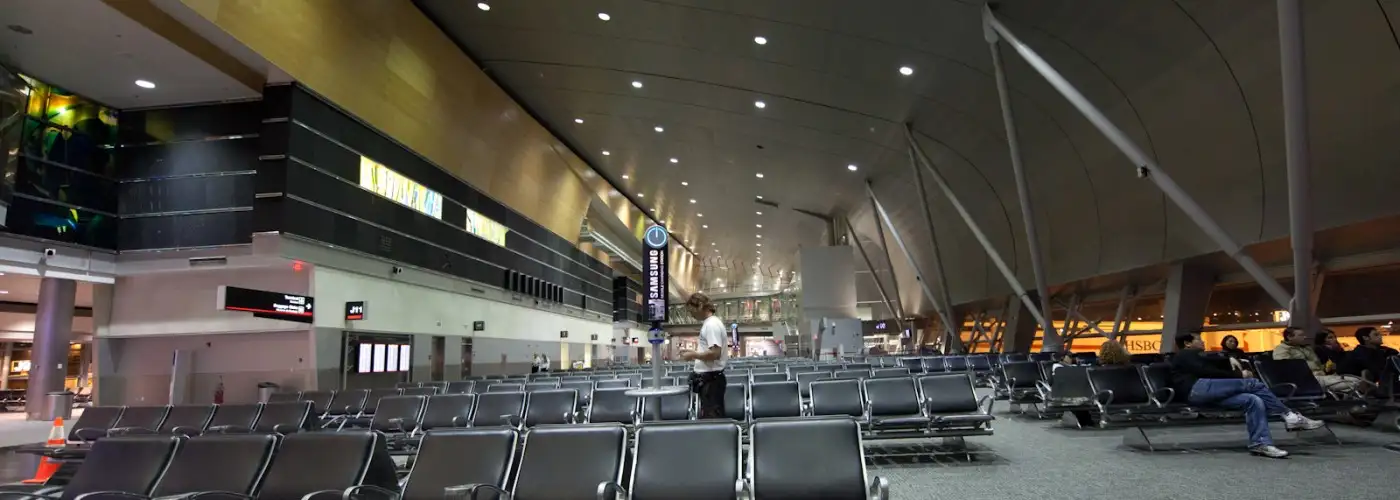In the future, flyers will speed through check-in and airport security with the tap of a smartphone. The technology exists. And the next step—the process of implementation at U.S. airports—has already begun.
Yesterday, SITA, a multinational company (owned in part by major airlines) that develops services and technology for airlines and airports around the world, announced the launch of a seven-year partnership with Miami International Airport. The deal could bring self-service boarding kiosks and other pioneering technology to the Florida hub.
Airlines have already been testing do-it-yourself boarding at select gates in a handful of U.S. airports. Additionally, self-boarding is in use extensively at airports in Europe and Asia. The technology hasn’t quite gotten its footing in the U.S., though. But Miami International will be the first hub in America to test SITA AirportConnect Open, the platform that provides self-boarding at gates, throughout the whole airport.
According to the SITA website, AirportConnect Open “allows any airline to use any agent desk, gate position or self-service kiosk for passenger check-in and bag drop, and reconciles passengers boarded.” In other words, Miami Airport will swap human airport workers for virtual kiosks. This is a cost-cutting measure likely to result in fewer service or security jobs at airports. But it could also streamline the experience for flyers, reducing wait times and improving passenger flow.
Maurice Jenkins, Director Information Systems and Telecommunications at Miami International, called the contract with SITA a “significant move for Miami Airport,” and said, “We are making this seven-year commitment to SITA because of its unique combination of advanced technology, round-the-clock service, on-site support and total dedication to the air transport industry.”
Although no concrete plans have been publicized yet regarding the exact technology that SITA will implement, it’s a possibility that the company will also pilot near field communication technology (NFC), which allows passengers to move through airport security checkpoints using smartphones, at Miami International. With this technology, phones embedded with an NFC-enabled chip can be used at as all-in-one boarding pass and identification. Instead of coming face-to-face with a TSA agent, you would simply scan your mobile device at a machine. Facial recognition technology or retina scans could be a part of the process, too. But any such innovations related to the bureaucracy that is airport security will probably come to fruition a long time after self-service boarding is installed and tested.
You Might Also Like:
- In-Flight Exercises That Aren’t Embarrassing
- 10 Free Things at Airports
- Hottest New Planes in the Sky
(Photo: jikatu via flickr/CC Attribution/Share Alike)
We hand-pick everything we recommend and select items through testing and reviews. Some products are sent to us free of charge with no incentive to offer a favorable review. We offer our unbiased opinions and do not accept compensation to review products. All items are in stock and prices are accurate at the time of publication. If you buy something through our links, we may earn a commission.
Related
Top Fares From
Today's Top Travel Deals
Brought to you by ShermansTravel
Ireland: 9-Night Dublin, Kilkenny, Killarney, Galway...
Brendan Vacations
 vacation
$3875+
vacation
$3875+
Amsterdam to Copenhagen: Luxe, 18-Night Northern...
Regent Seven Seas Cruises



Ohio: Daily Car Rentals from Cincinnati
85OFF.com






